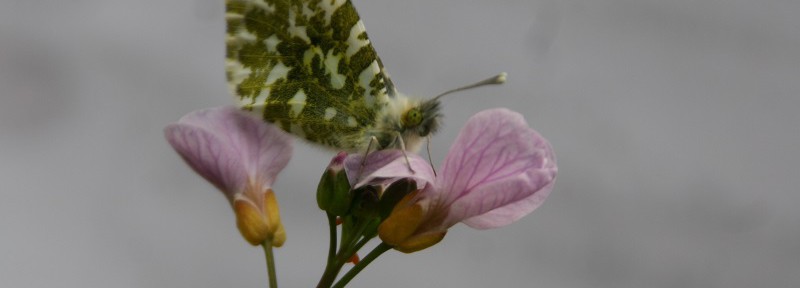
Recording wildlife is a really important environmental indicator, but it needs regular visits and hours of commitment so it can be hard for organisations such as the Council to resource it. Here TCV’s Claire Quinn talks about an innovative project she has been running in the Seven Lochs area to train and support volunteers to carry out Butterfly surveys with Citizen Scientists.
Butterflies can be useful indicators of the state of the environment and their numbers help us assess (among other things) the impacts of climate change and where conservation efforts should be focused. One method of recording butterfly population distribution and numbers are transect counts. Carrying out a transect count involves walking a set route through various habitats at a site and recording the species and number of butterflies seen within a specific distance from the path. The Glasgow Countryside Ranger Service was previously responsible for coordinating two butterfly transects within the Seven Lochs Wetland Park, one at Hogganfield Park LNR and another at Cardwan Moss LNR. However due to pressures on their time I was asked to take over the coordination of these transects and data collection for the 2014 season onwards.
I saw this as a great opportunity to train up volunteers to carry out the weekly transects as this would improve their identification skills and provide a sense of ownership and stewardship for our sites. I organised a workshop led by Butterfly Conservation on butterfly identification and survey techniques so that the volunteers would have the necessary skills and be confident to carry out the transects independently. Our group of volunteers did a fantastic job of monitoring the butterfly populations at both sites over the 6 month survey season. Four individuals were responsible for each of the two transects and a rota was drawn up at the start of the season. The volunteers sent me their records from each week to be entered into the online UK Butterfly Monitoring Scheme; which is a national database where the transect results are analysed and contribute to research into habitat and climate change.
Having trained volunteers who are able carry out the transects is extremely valuable as each route needs to be walked once a week for 26 weeks which is a big time commitment for one person. Butterfly transects are a great survey to be involved in as there is a lot of flexibility as to when you do it; you can carry out the transect on any day during your assigned week. Another bonus is that you only go out on warm, dry days as butterflies won’t be on the wing on cool, wet days. The Seven Lochs volunteers really enjoyed their surveying experience and were keen to see the trends at the end of the season. Learning a valuable new skill which can be used for formal recording as well as informally while out and about was something that a number of the volunteers were pleased to have taken from this experience. A few are keen to take on the butterfly transects again in 2015 which is great news for citizen science!
If you live in the Seven Lochs area and would like to get involved in wildlife monitoring please contact Claire at c.quinn@tcv.org.uk. There are also loads of great ideas to get involved in citizen science on our website.
